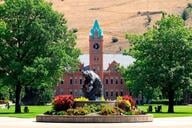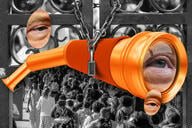You have /5 articles left.
Sign up for a free account or log in.
It's just a few weeks from the next edition of the U.S. News & World Report "Best Colleges" rankings, widely questioned by educators but relied on by many students and parents (and boasted about by some of the same educators who say that the rankings are a lousy way to pick a college).
But it turns out that eight of the colleges ranked a year ago submitted information that was sufficiently incorrect that it would have changed their places in the rankings. And so U.S. News has declared them to be "unranked," a punishment that lasts until Sept. 10, when the new edition comes out.
The eight additional colleges reported to have submitted incorrect data follow other incidents this year, which has seen an uptick in the number of colleges whose rankings were based on incorrect information. In one of those cases -- involving the business school of Temple University -- officials have admitted that incorrect data were submitted intentionally and for several years for several programs. Some of the eight new colleges are blaming human error, not malice, for the flaws in their data. Others are blaming U.S. News.
A summary by U.S. News of rankings problems is as follows:
- Austin Peay State University incorrectly reported its six-year graduation rate as 40 percent when it was 37 percent.
- Dakota Wesleyan University incorrectly reported its average need-based grant to undergraduates. The university reported the average was $16,406, but the correct figure is $13,579.
- Drury University understated its enrollment as 1,611, when it was actually 3,571. The error made it appear that spending per student was much higher than it was.
- Hampton University originally reported a six-year graduation rate of 66 percent when it is 56 percent.
- Oklahoma City University originally reported a six-year graduation rate of 62 percent when it is 59 percent.
- Randolph College reported that its average faculty salary was $104,200 when it was $88,647.
- Saint Louis University reported a six-year graduation rate of 77 percent when it was really 74 percent.
- Saint Martin's University reported its six-year graduation rate as 55 percent when it was actually 52 percent.
Generally, U.S. News does not remove rankings from colleges whose errors were so small that they do not affect the numerical ranking a college receives over all. But in all of these eight cases, the errors were large enough that colleges would have seen drops in their rankings.
In the year since U.S. News last released "Best Colleges," it has also announced that incorrect information was used for rankings for the following institutions -- generally for professional schools, not the college as a whole. Beyond Temple, institutions that have lost rankings due to incorrect data in the last year include Sam Houston State University (education school), Texas Christian University (business school), the University of Florida (nursing school) and the University of South Florida (nursing school).
One of the eight colleges identified this week as having rankings errors, Dakota Wesleyan, did not respond to requests for comment.
Austin Peay said it believed that its information was correct, and that its ranking shouldn't have been changed. A spokesman for Oklahoma City said that a minor error was made because U.S. News changed the way it calculates graduation rates.
Hampton University sent a statement saying that U.S. News had "suddenly" changed its formula for calculating graduation rates, and that Hampton's original figures were within the old U.S. News system. Hampton said that its original figures included students who had attended Hampton and graduated from other institutions, which it said was "well within the exiting guidelines." But U.S. News "shifted" its polices, Hampton said. Hampton's statement said the actions by U.S. News would result in "potentially brand damaging media attention."
Robert Morse, who leads the U.S. News rankings, said via email that no changes had been made this year to the way graduation rates are calculated. Further, he said that U.S. News had never calculated graduation rates in a way that gave credit for those who leave and graduate from other institutions.
Drury University's president, Timothy Cloyd, said the problem there was that some information was prepared using residential undergraduate totals, and other information was prepared using online and adult students as well. It was a "too many chefs in the kitchen" situation, he said, and the university is revamping its procedures to prevent future problems.
An official from Saint Martin's said that institution accidentally entered data from the previous year.
A statement from Saint Louis University said that it believes its errors actually did not improve its rankings. Saint Louis said that the problem related to counting some nondegree students together with degree-seeking students. Nonetheless, a statement from the university said that it regrets the error and will examine its processes to prevent future errors.
A spokeswoman for Randolph said that a single keystroke created the college's error. The college accidentally reported that it has four assistant professors, not 14. That led the total salary figure to be overstated, since the full professors and associate professors earn more, and their numbers were not undercounted.
U.S. News has always said that colleges themselves must audit the data they submit.
Asked if the errors in the last year suggested a problem, Morse, said that this was not the case. He said that the organization "takes cases of misreporting seriously." He added that the errors are "rare," considering that more than 1,800 colleges are included in the U.S. News rankings.
This year's errors are being reported more than 11 months into the year in which the rankings have been out, and the "unranking" of these colleges will end with the release of the new rankings Sept. 10. Asked if losing a ranking for a few weeks was a sufficient sanction, Morse said that reporting by Inside Higher Ed and others drew attention to errors and would "result in schools facing greater scrutiny about their academic offerings from the media, and more importantly, the public."




